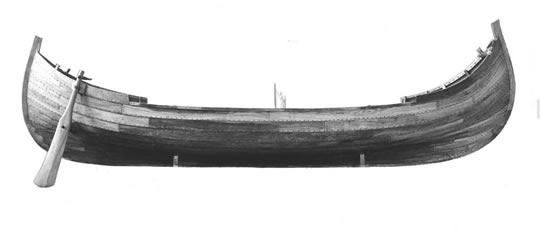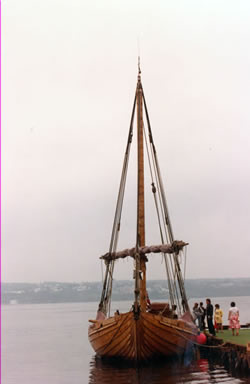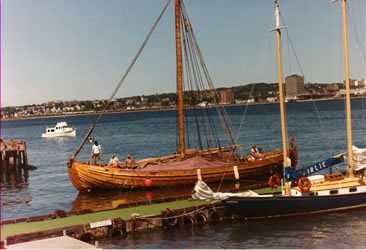Ships and Navigation
Invariably, the word Viking conjures up images of Viking ships, especially the three famous Norwegian Viking ships from Oseberg, Gokstad, and Tune now on exhibit in the Viking Ship Museum in Oslo, Norway. Another group of ships has been found at Skuldelev in Denmark and is exhibited in the Roskilde Viking Ship Museum. However, the story of Viking navigation is much more than these ships. The full story arises from texts and depiction of ships in Viking art and the study of innumerable traces of ships. Sometimes, when the wood has dissolved completely, only imprints of ships remain in the soil and the nails once holding the boat planks together.
The prerequisite for the Viking expansion was the development of ships that could be trusted on the open ocean making it possible to maintain regular traffic to and from distant points of land. Scandinavians had ships long before the Viking Age but it was not until the 7th century that they began equipping their ships with sails. By the late 780s, aided by wind power, Scandinavians were ready to strike out on the Atlantic. It was their sudden appearance from the open sea that caught the English unaware in the first Viking raids. The ability of the ships to land in shallow waters made blitz attacks possible. Before the victims could get organized, the assault had taken place, the loot carried aboard, and the attackers gone.
The ocean-going capabilities of the Viking ships also made it possible for Scandinavians to settle in far-away places such as the Faeroes and Iceland. Prior to the 9th century, settlement would not have been an option because there were no ships capable of carrying large groups of people, their animals and the supplies needed for survival.
Over the 11th century, the Scandinavian art of ship building was developed further, and the range of ships expanded. Ships became more specialized. Ships meant for the traffic to Iceland and Greenland, where the ability to carry cargo was an important consideration, became larger, and heavier. Termed knerrir (singular: kn÷rr), they could carry as much as 40 tons or more. These were true sailing ships, oars being used only to land and depart from land. The ships used on the Russian rivers and the rivers leading from the Baltic Sea into the heart of Europe were fairly small and probably as light as possible. For warships the most important qualities were speed, capacity to transport as many men as possible, and independence of winds. For that reason they became long, light, shallow and sleek, and equipped with many pairs of oars.
Hand in hand with the development of ships and experiences of new routes came advances in navigation. Sailing on the open sea, where land marks were few and far between, required a new reliance on natural phenomena such as the position of the sun, the Polar star, prevailing winds, swell, flotsam, and birds. To maintain regular traffic between Iceland and Norway or Greenland and Norway without the aid of compasses, sextants, or other navigational equipment, required experience, skill and courage. Thanks to their navigational capabilities Icelanders and Greenlanders could maintain their strong links to Europe, an important aspect of their cultural identity. However, the voyages were fraught with dangers, and ship wrecks or failed destinations were common. Against the Atlantic, the Norse were not invincible.
In this section you will gain some of the tools you need to discuss the feasibility of the Vikings’ voyages to North America, both in terms of navigation and ships.




